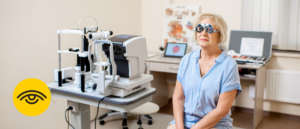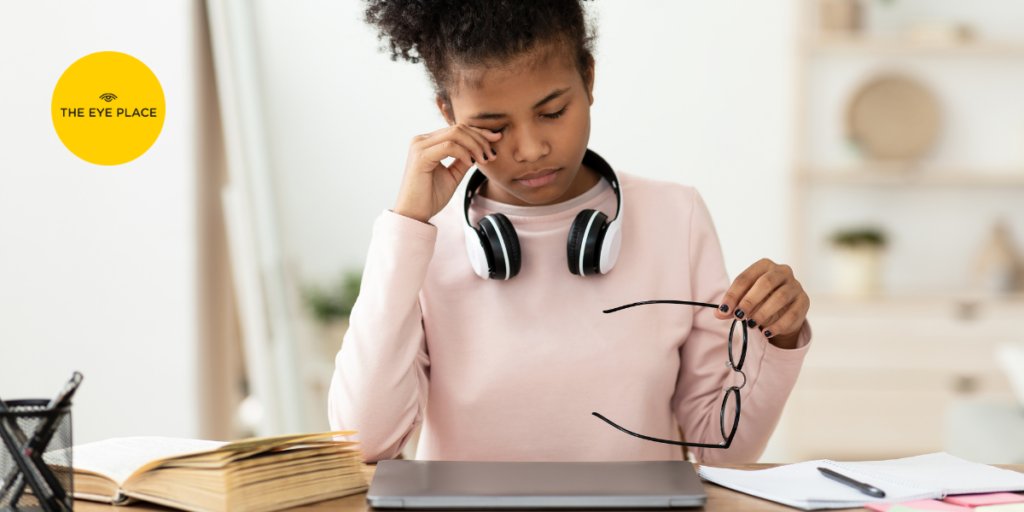

Elderly eye health – encouraging your parents to get their eyes checked
Just like physiotherapy and regular doctor appointments, elderly eye health is an important aspect to growing older. We know it can be difficult to encourage


There’s a lot of great things about living in a digital age – one being our ability to work from home if we need! In uncertain times like those we’ve faced in 2020, and when we’re being advised to practice social distancing and self-isolation, your digital devices are vital. Computers and phones allow us to keep up with your loved ones and get things done while not physically in the office/workplace. However, all that screen time and blue light could be having a negative impact on your eyes. Do you know how to look after your eyes while working from home?
Blue light rays have the shortest wavelength of any part of the light spectrum. Sunlight is the main source of blue light. But, while we’re spending so much time indoors, it’s likely we’re coming into contact with a lot of man-made sources of blue light. These include fluorescent and LED lights. The display screens of computers, electronic notebooks, smartphones and other digital devices have significant amounts of blue light.
Interestingly, blue light scatters more easily than other visible light and is not as easily focused. But this isn’t anything to be worried about!
Some blue light exposure is essential for good health. This is because high-energy visible light boosts our alertness, helps memory and cognitive function, and even elevates mood. However, problems arise when we get too much blue light. The amount of time people spend using their digital devices, and how close you hold these screens to your face, may be putting your eyes at risk.
People who have their screens too close to their eyes, or spend too much time looking at them (without breaks) may experience issues. Problems relating to digital strain, macular degeneration and more are common side effects of too much blue light. That’s why being ergonomic while working from home is so important.
Ergonomics relates to efficiency and comfort while in a working environment. One way to ensure your home office is ergonomic is to adjust your body so that you feel natural. Here’s a few key tips to do that:
Ensuring your eyes can focus effectively is important. By making sure your device is at the right height, you can do this. Stretching and taking breaks from the screen will also help, as it gives your eyes a little rest from all that blue light.
But what if you have glasses?
Firstly, it’s important to note that a pair of reading glasses are not the same as a pair of computer glasses.
A reading prescription is set at a closer focal length (approx. 40cm away from you). Meanwhile, a computer prescription may be set just for your screen distance away (generally at an arm’s length) or incorporate changes in the power across the lens to provide more flexibility.
The lens designs typically used for deskwork and screens are known as extended reading lenses.
As the name suggests, the areas for reading and intermediate vision are maximised with these designs. The extended reading lenses provide wider intermediate and reading zones when compared to a multifocal lens design. A multifocal lens design will tend to provide a narrow intermediate zone and a small reading zone. This suffice for everyday activities but likely won’t work for everyone while reading. An extended lens design is recommended for multifocal wearers who have to scan a lot with the intermediate portion of the lens at their screen, and struggle to get comfortable reading vision. You can learn more about eyeglasses and lens types here.
With most of us spending over two-thirds of our waking hours looking at;
and then;
we’re exposed to many blue-light emitting sources every day.
Thankfully, a lot of devices (especially today’s smartphones) offer a less-straining backlight option. This is often called “night shield” or “night mode”. This option gives the device a lower brightness and often has a yellow tint, which is much easier on the eyes. However, some people will still suffer from digital eye strain.
Another lens coating, that is beneficial for use on digital devices, is a blue light reducing anti-reflective coating. Perhaps users suffering from eye strain should consider this option. These eyeglasses simply filter out the blue light, making it easier for you to read from your screen.
To discuss your options get in touch with The Eye Place today.


Just like physiotherapy and regular doctor appointments, elderly eye health is an important aspect to growing older. We know it can be difficult to encourage


Astigmatism is caused by the cornea or lens of the eye not being perfectly curved, resulting in blurred vision. How this affects you is varied


When you use your eyes to concentrate on something for a long period of time the common result is eye strain. Tired, sore, and itchy
Monday 9am–5:30pm
Tuesday 9am–5:30pm
Wednesday 9am–5:30pm
Thursday 9am–6:30pm
Friday 9am–5:30pm
Saturday Closed
Sunday Closed